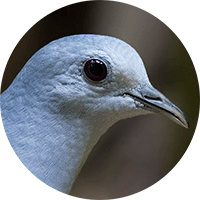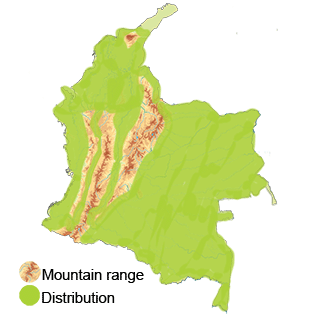Blue-Ground-dove
The Blue Ground-Dove (Claravis pretiosa) Read in Spanish
Appearance: The Blue Ground-dove is characterized by its vibrant blue plumage on the head and upperparts, with a deep purple sheen on the back and wings. The underparts are a rich cinnamon color, and it has red legs and a bright red patch of skin around the eye. This color combination makes the Blue Ground-Dove one of the most visually striking species of doves.
Habitat: Blue Ground-doves inhabit a variety of wooded habitats, including tropical and subtropical forests, forest edges, and plantations. They are often found in areas with dense vegetation, where they can forage for seeds, fruits, and insects on the forest floor.
Behavior: These doves are generally shy and secretive birds that prefer to forage on the ground, using their strong legs and feet to scratch through leaf litter in search of food. They are known for their soft cooing calls and may be observed in pairs or small groups moving stealthily through the undergrowth.
Breeding: During the breeding season, Blue Ground-doves engage in courtship displays that may include vocalizations, puffing up of feathers, and dancing rituals. They construct simple nests made of twigs and plant materials in low shrubs or trees. The female typically lays one or two eggs, and both parents share in the incubation and care of the young.
Conservation Status: The Blue Ground-dove is considered a species of least concern by the International Union for Conservation of Nature (IUCN) due to its relatively stable population and widespread distribution.
Distribution
The Blue Ground-Dove (Claravis pretiosa)
- Eastern Andes: The Blue Ground-Dove is known to inhabit areas in the eastern slope of the Andes mountain range in Colombia. These regions feature diverse montane forests and cloud forests that provide suitable habitat for this species.
- Amazon Basin: Parts of the Amazon Basin in Colombia, particularly the Amazon rainforest and surrounding areas, provide important habitat for the Blue Ground-Dove. The species can be found in forested areas and riparian habitats within the Amazon region.
- Pacific Coast: The Blue Ground-Dove may also occur in regions along the Pacific coast of Colombia, where there are pockets of humid forests and mangrove habitats that support populations of this species.
- Orinoco River basin: The Orinoco River basin, which extends into eastern Colombia, is another region where the Blue Ground-Dove can be observed. This region consists of savannas, gallery forests, and wetlands that provide suitable habitat for a variety of bird species, including the Blue Ground-Dove.
- Tropical Lowlands: In general, the Blue Ground-Dove can be found in various lowland tropical forested areas across Colombia, especially in regions with dense vegetation and suitable foraging opportunities on the forest floor.
Taxonomy
The Blue Ground-dove (Claravis pretiosa)
- Kingdom: Animalia
- Phylum: Chordata
- Class: Aves
- Order: Columbiformes
- Family: Columbidae
- Genus: Claravis
- Species: Claravis pretiosa
Vocalization
The Blue Ground-dove (Claravis pretiosa) is known for its soft and melodious vocalizations. The vocalizations of the Blue Ground-dove typically consist of low, mournful cooing calls that are repeated at regular intervals. These calls are often described as gentle and soothing, adding to the overall tranquil ambiance of forested habitats where these doves are commonly found.
The vocal repertoire of the Blue Ground-dove may include various tones and pitches of cooing sounds, which are used in communication between individuals. During courtship displays and interactions between mated pairs, these vocalizations may become more pronounced and elaborate, serving as a way to establish and maintain social bonds.
While the Blue Ground-dove is generally a quiet bird compared to some other dove species, its soft cooing calls are a distinctive feature of its presence in its habitat. These vocalizations may be heard throughout the day, especially during the early morning and late afternoon hours when the doves are most active.




